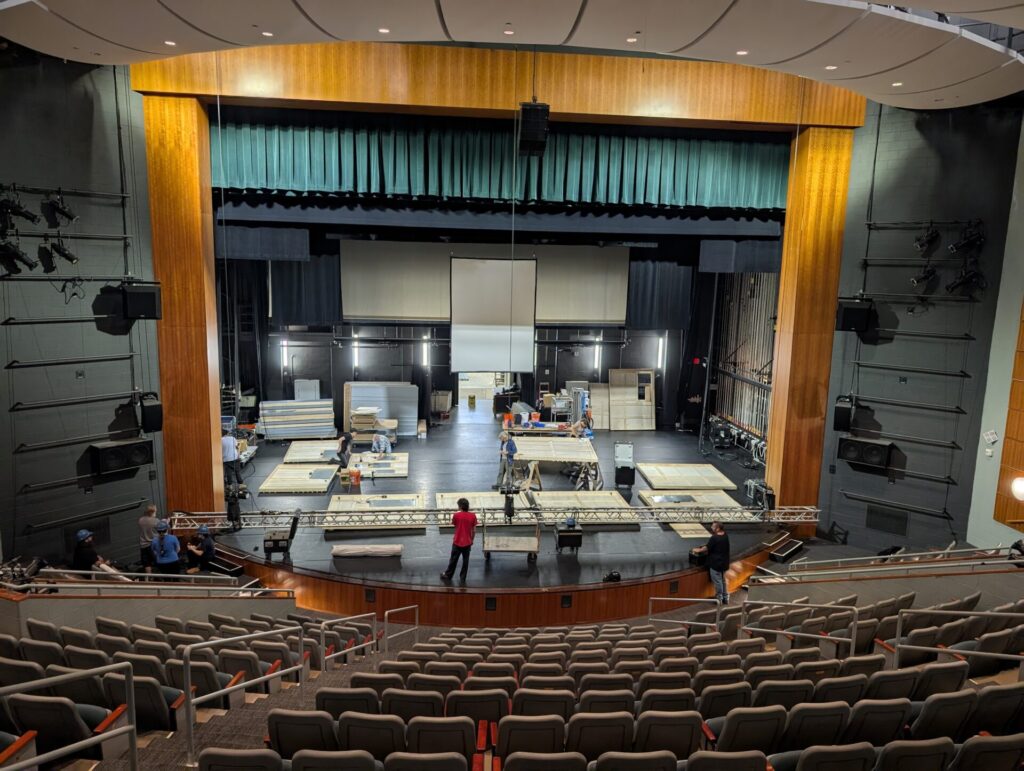More than stagecraft, theatre design is a poetic and political act; shaping perception, provoking memory, and transforming silence into meaning.
Theatre design is often misunderstood as mere stage decoration or set design. In truth, it is one of the most profound and poetic aspects of the performance arts.
What is theatre design? To answer this, we must first discard the notion that it is a secondary craft—something that follows the director’s vision or the playwright’s words. Theatre design is not the backdrop against which theatre unfolds; it is the embodied atmosphere in which the world of the play breathes. It is the creation of meaning through spatial composition—through light, shadow, texture, and time. In many ways, it is not about designing space, but about staging perception itself.
Theatre design is not merely what is seen. It is also what is felt in the body, what is heard in the silence between words, what is sensed through shifting proximities, and what is remembered in the aftermath of light. It invites us to think with all our senses. The scent of a damp floor, the coldness of metal, the pulse of stillness, or the emptiness between two objects, all these are design choices. In this way, design awakens the theatre of the senses.
Space as memory, material, and meaning
Theatre design is also a form of dramaturgy. At its most powerful, it does not illustrate the action; it is the action. A cracked wall, a shaft of red light, a curtain that refuses to move—these become texts in their own right. They speak, often more truthfully than language.

Today, the stage is no longer confined to wood and curtain. Digital technologies, virtual realities, projection systems, and augmented interfaces allow us to conjure living environments that transform before our eyes. Yet amidst all this technological flux, the core of design remains unchanged: it asks us to listen to space, to understand the psychology of distance, to choreograph time.
Theatre design is not just about constructing a stage or focusing a light. It is about thinking scenographically—sensing relationships between objects, bodies, materials, and emotions. It is about recognising that even an empty room is full of meaning, and that every material carries a history, a memory, and a resistance.
We must also acknowledge that space is never neutral. The way we divide, elevate, hide, reveal, and organise space expresses who has a voice, who remains unseen, and who holds power. Therefore, theatre design and scenography are also political and ethical practices. To create space is to make decisions about the experience of others. In doing so, we shape not only aesthetics, but also access and participation.
From makers to listeners of space
In a world overwhelmed by surfaces, this practice demands depth. It teaches us to pay attention, to dwell, to attune ourselves to the energies of silence and material. It asks us to become not only theatre-makers, but space-listeners, light-weavers, sound-choreographers.

To truly understand theatre design, one must let go of function and craft alone. We must enter into it as explorers—as poets of texture and form. We must engage with space not just physically, but philosophically. Understand that when you draw a line in space, you are drawing attention. When you introduce a threshold, you are inviting transformation. And when you build a world, you are also asking a question: What does this world make us feel, believe, remember, and forget?
Theatre design is not only about making, it is also about unmaking. Unlearning assumptions. Dismantling hierarchies. Reimagining presence. It is a place where stillness speaks, and emptiness becomes a gesture of invitation.




